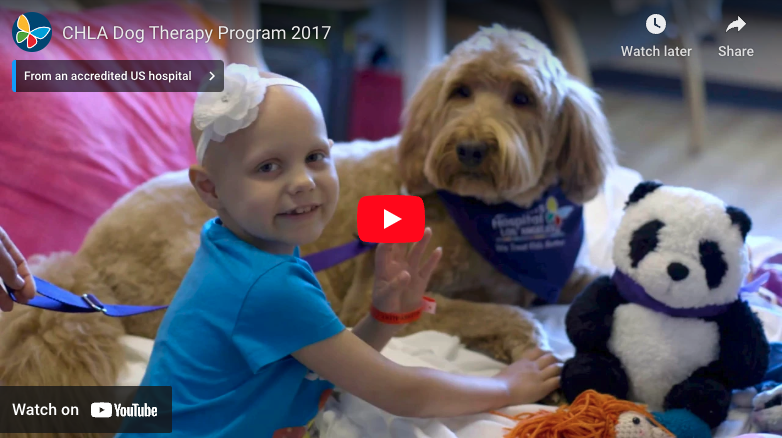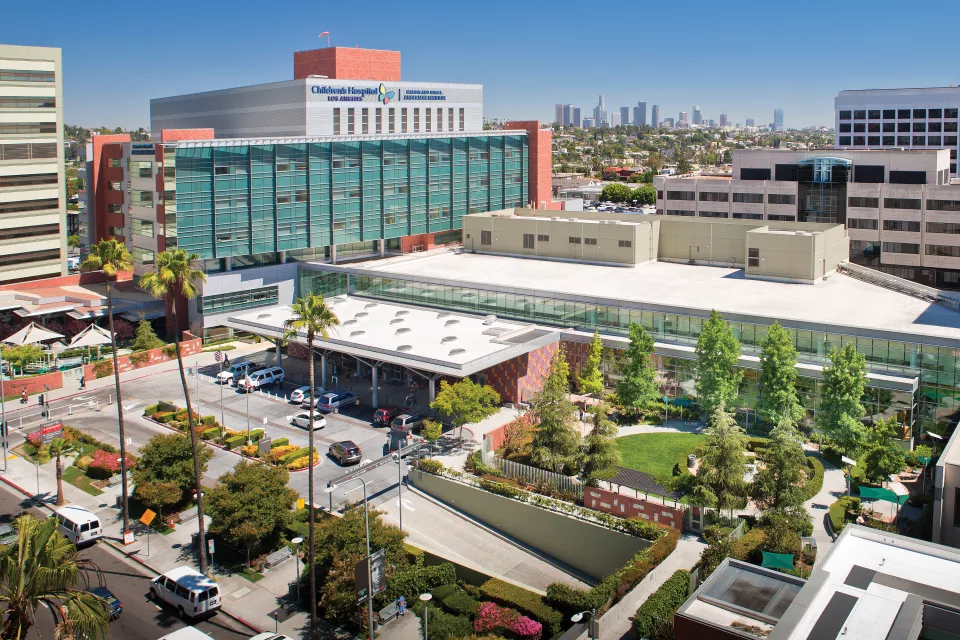It’s hard to overstate the impact of the therapy dog program at Children’s Hospital Los Angeles. One of the most inclusive and innovative programs of its kind anywhere, the Amerman Family Foundation Dog Therapy Program recruits, trains and supports a roster of roughly 100 therapy dog teams visiting a wide variety of clinical settings. The arrival of a dog at a patient’s room is often one of the most anticipated parts of the child’s hospital stay, providing an opportunity for a happy, memorable moment during what can be a challenging time.
As respect for the program’s impact has grown, so has demand for therapy dog involvement. This program now visits every inpatient unit at CHLA except for surgery, including all three intensive care units, as well as several outpatient clinics.
Dog therapy has been a vital part of the culture at Children’s Hospital Los Angeles since 2001. What began as three dogs visiting one 30-bed unit has expanded to better meet the needs of all patients. Dog teams can now visit from early morning to night, seven days a week, all year round. Their shifts rotate so that we can deliver dog therapy to all units and clinics as frequently as possible. Dogs of all ages, breeds, and sizes visit CHLA. From tiny 4-pound Tino to giant 190-pound Bonner, all of our dogs and their human handlers are volunteers who have completed a comprehensive evaluation process.

How Dogs Help
While a majority of visits take place in patient rooms and are catered to the individual needs and wishes of the child, dogs are also available to help motivate kids during physical therapy, distract them during long or uncomfortable procedures, and provide relief for those in pain. In fact, the Amerman Family Foundation Dog Therapy Program is considered a part of the Pain Management and Palliative Care Program, and overseen by medical professionals from anesthesiology and critical care medicine.
On the rehabilitation unit, therapy dogs are incorporated into physical, occupational and speech therapy efforts. Under the supervision of a medical professional, the dog is utilized to help the patient address a specific treatment goal. For example, a patient working on gross motor skills might be tasked with rolling a ball back and forth with a dog in the rehab gym, while a patient in speech therapy might be encouraged to speak dog-appropriate commands. In areas where treatments can last many hours, like the infusion center or dialysis clinic, dogs provide distraction and companionship to help the time pass. And if a patient needs extra support for any reason – anxiety over a specific procedure, loneliness if a parent has to go home or to work, motivation for that first daunting attempt to get out of bed after major surgery – a hospital caregiver can request a special dog visit.
While patients receive the longest and most focused interactions, dogs also lend support to siblings, parents, visitors, medical staff and other employees. More than 25,000 individuals benefited from a dog therapy interaction at CHLA last year.
How You Can Help
Our program is funded entirely by donations. Every dollar raised helps us train and support new teams to better meet the growing demand for dog therapy at CHLA. To learn more on how to support dog therapy at CHLA, please contact Kate Buhrmaster, 323-361-6580.



